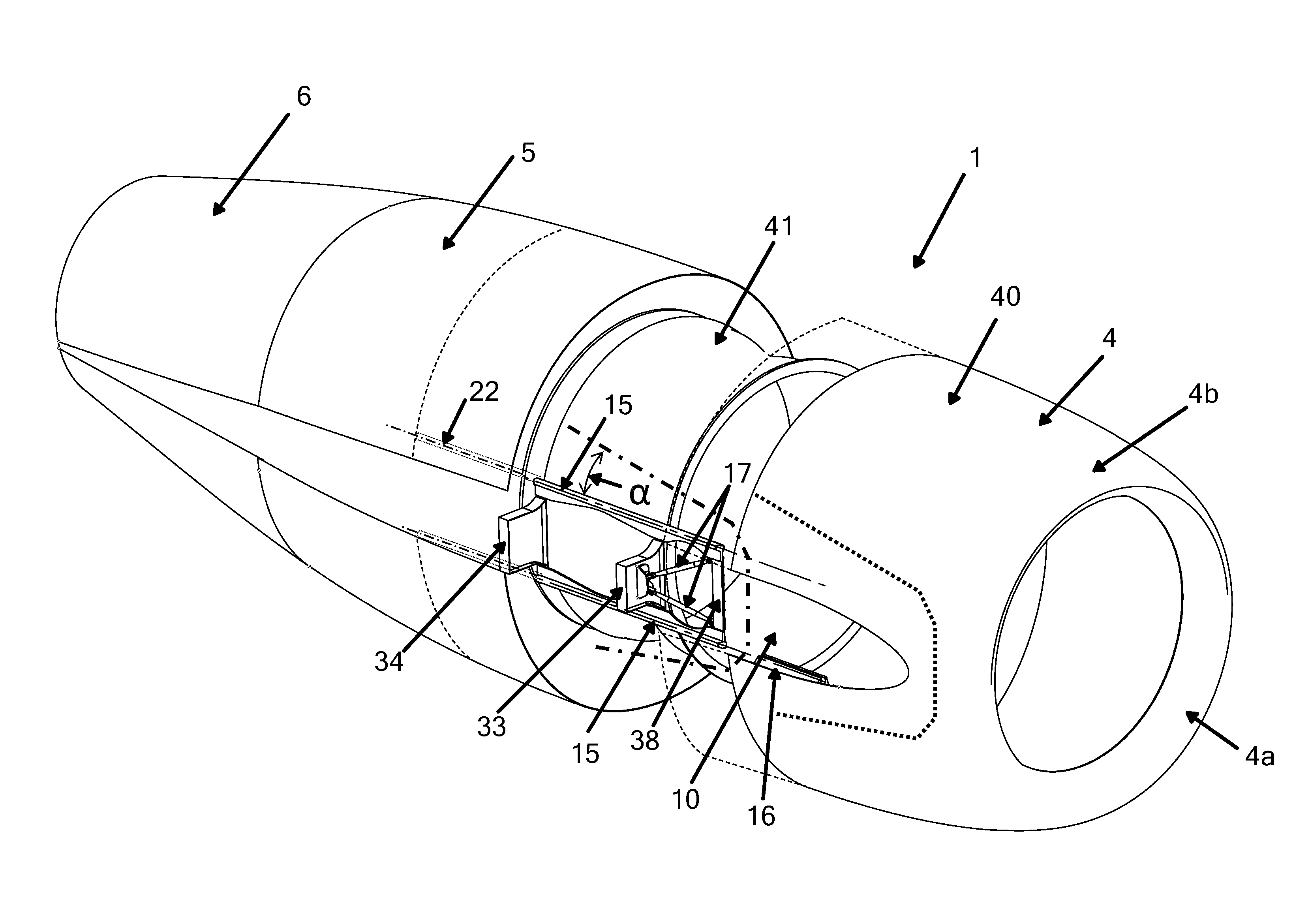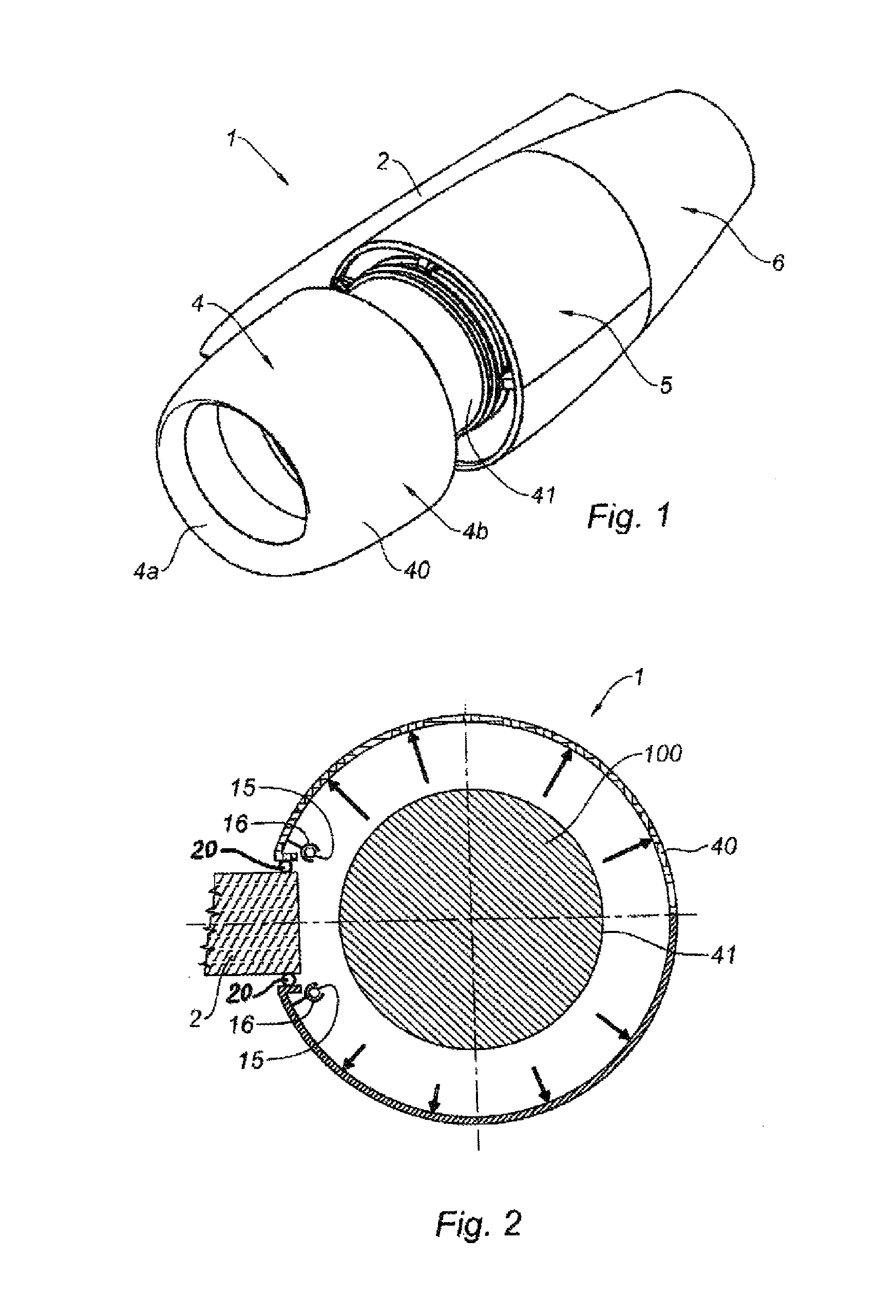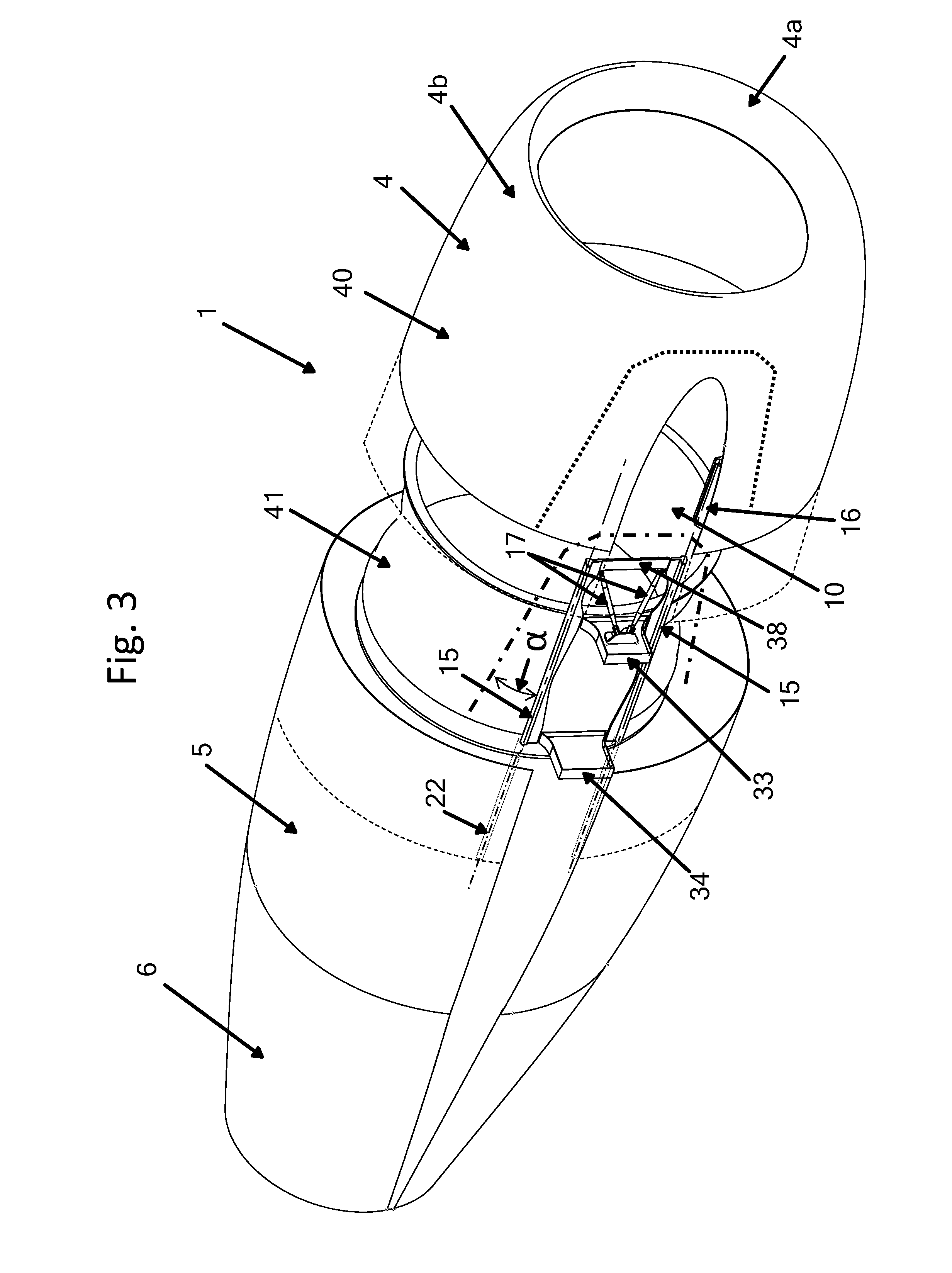Turbojet engine nacelle with translatable upstream cowl
a technology of turbojet engine and nacelle, which is applied in the direction of jet propulsion plant, turbine/propulsion air intake, power plant arrangement/mounting, etc., can solve the problems of affecting the not being able to monitor the equipment fully, and affecting the overall performance of the engine,
- Summary
- Abstract
- Description
- Claims
- Application Information
AI Technical Summary
Benefits of technology
Problems solved by technology
Method used
Image
Examples
Embodiment Construction
[0039]A nacelle 1 according to the invention, as shown in FIG. 1, constitutes a tubular housing for a turbojet engine 100 whereof it serves to channel the flows of air that it generates by defining inner and outer aerodynamic lines needed to obtain optimal performance.
[0040]More specifically, the nacelle shown in FIG. 1 is intended to equip an airplane of the business or tourism type. The propulsion assemblies of such airplanes are generally fastened at their fuselages via a substantially horizontal pylon 2.
[0041]In general, the nacelle 1 has a structure comprising a forward section forming an air intake 4, a central section 5 surrounding a fan and a compressor body (not shown) of the turbojet engine, and a rear section 6 able to house a thrust reverser system.
[0042]The air intake 4 is divided into two zones, i.e. on one hand, an air intake lip 4a adapted to allow optimal collection towards the turbojet engine 100 of the air necessary to supply the fan and the internal compressors o...
PUM
 Login to view more
Login to view more Abstract
Description
Claims
Application Information
 Login to view more
Login to view more - R&D Engineer
- R&D Manager
- IP Professional
- Industry Leading Data Capabilities
- Powerful AI technology
- Patent DNA Extraction
Browse by: Latest US Patents, China's latest patents, Technical Efficacy Thesaurus, Application Domain, Technology Topic.
© 2024 PatSnap. All rights reserved.Legal|Privacy policy|Modern Slavery Act Transparency Statement|Sitemap



